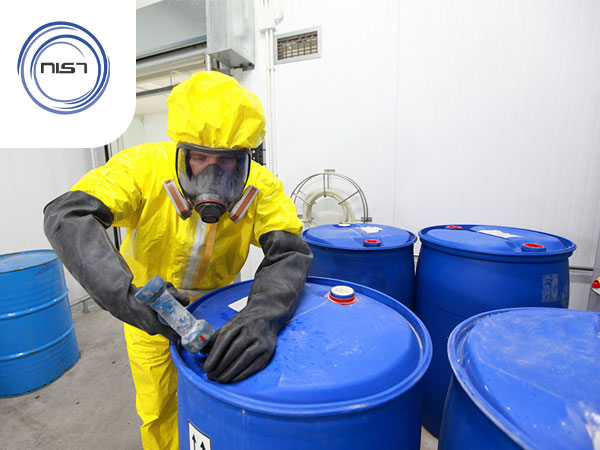Chemical Safety
Disaster in a chemical industry is very rare, but negligence could result in devastating consequences. Incidences could arise at any stage and at any time such as during erection, commissioning, manufacturing, maintenance, disposal or transportation. Whenever it happens, chemical incidents might end up with fire and/or toxic releases. A major mishap could spill catastrophe in terms of loss of life, occupational disease, and threat to the environment. As a result, organizations may face high consequence incidents, incur costs of treatment and rehabilitation, face legal costs and may have to pay fines and compensation claims.

-
DurationHalf Day / 1 Day
-
Training ModeOnline / Classroom
-
Learning PartnerNIST
-
SubjectChemical Safety
-
LevelAwarenes / Intermediate
-
LanguageEnglish
-
PrerequisitesNone
-
ScopeAwareness - Theory,
Intermediate - Theory & Practicals
-
For queries, & Assistance
Disaster in a chemical industry is very rare, but negligence could result in devastating consequences. Incidences could arise at any stage and at any time such as during erection, commissioning, manufacturing, maintenance, disposal or transportation. Whenever it happens, chemical incidents might end up with fire and/or toxic releases. A major mishap could spill catastrophe in terms of loss of life, occupational disease, and threat to the environment. As a result, organizations may face high consequence incidents, incur costs of treatment and rehabilitation, face legal costs and may have to pay fines and compensation claims.
Chemical disasters may happen in one of the following ways:
- Failure of critical factors
- Ageing of process plants
- Temperature and process deviations from set limits
- Runaway reactions
- Mixing of incompatible materials
- Catastrophic rupture of reactors
- Inadequate hazard analysis
- Lack of management of change process.
- Human errors due to non-compliance of standard operating procedure and so on.
However, a paradigm shift towards chemical safety started post Bhopal gas tragedy in 1984. Nonetheless, the silver lining is that all chemical disaster are preventable. NIST in this regard approaches safety from reactive to proactive safety culture through imparting training.
Learning Outcome of Chemical Safety Training
- Introduction to chemicals and their various physical forms
- Identify the classification of hazardous substances at work
- Identification of hazardous activities and their elimination
- Assess the risks associated with hazardous substances
- Control of exposure
- Use of spill containment kit
- Maintenance of plant facility
- Compliance with existing rules and regulations
- Emergency preparedness
Who can take the Chemical Safety Training?
Those involved in completing assessments of hazardous chemicals and implementing controls like managers, supervisors and safety officers, plus other health and safety professionals looking to refresh or update their skills in chemical handling can opt for this course.
Benefits of Chemical Safety Training
Training on chemical safety would yield benefit in terms of reducing serious accidents involving hazardous chemicals, which in turn would entail obvious legal and financial benefits. Moreover, it would lead to improvement in the morale of employees thereby boosting their productivity.
